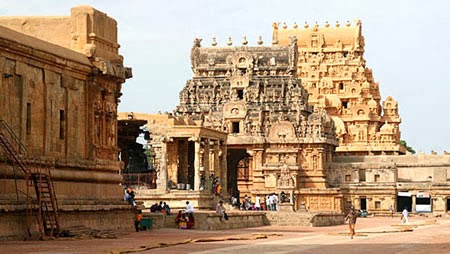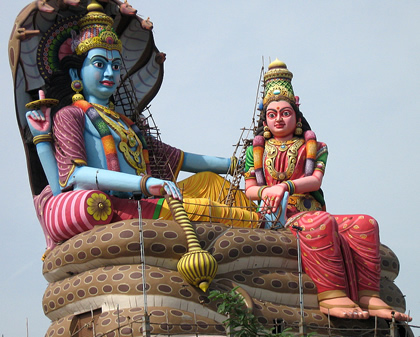 |
| Chola Kingdom |
The Chola kingdom was a medieval Indian state, which saw most of southern India being brought under a united government for the first time. At its greatest extent, Chola covered not just the south of India but also Sri Lanka, peninsular Malaya, western Borneo, and other islands of archipelago Southeast Asia.
The Chola used the Tamil language and religious and cultural concepts. The origins of the state are unclear, although the Chola King Raja Raja I invaded the southern Deccan region in 993 in a series of campaigns that lasted for nearly 30 years.
This contributed to the downfall of the Calukya dynasty and provided opportunities for Chola and Deccan rulers to contest former Calukya territory. In 1070 Chola King Rajendra II united the existing holdings into a unitary state, which was then free to expand its holdings across the trade routes that stretched across the Indian Ocean to Southeast Asia.
The next centuries were something of a golden age for southern India, with religious and artistic expression reaching high levels of achievement. Although caste-based societies such as that of the Chola are often thought of as lacking social mobility and the ability to innovate, this was not the case. Instead, creation of new crafts and skills enabled the reordering of society and the classes within it to a considerable extent.
The fact that so many different sets of people from many different homelands were a part of the Chola kingdom contributed to this mobility. The social mobility extended to women as well as men and a number of new occupations and ranks were made available to them. Specific areas of achievement included literature, bronze statuary and works, and architecture, particularly in terms of temple architecture.
The temple of Shiva at Thanjavur, which was completed in 1009, is regarded as a noted masterpiece demonstrating characteristic styles of southern India. The pantheon of Hindu gods provided numerous opportunities for artistic creativity, and the combination of creativity and incoming influences helped to create a number of exquisite creations.
Inscriptions found on Southeast Asian islands show the progress of Chola domination across the ocean. Raja Raja and Rajendra both persecuted a fierce campaign against the Srivijaya Kingdom and ultimately destroyed it. This allowed Chola to take over a monopoly of trade in the region and to gain greater access to Chinese markets and the burgeoning city-states of mainland Southeast Asia.
However, as in the case of the Indian homeland, evidence concerning the actual nature of who governed where and when is unclear. Inscriptions make grandiose claims, which in some cases are not substantiated. The end of the Chola empire is variously given as either in the 12th or 13th century, most often in 1279.
The arrival of Mongol Yuan troops in Southeast Asia radically changed the balance of power in the region while, in India, the rise of Hosalya and Pandya polities ultimately eroded the economic basis of the Chola empire and it was subsumed by successors.





